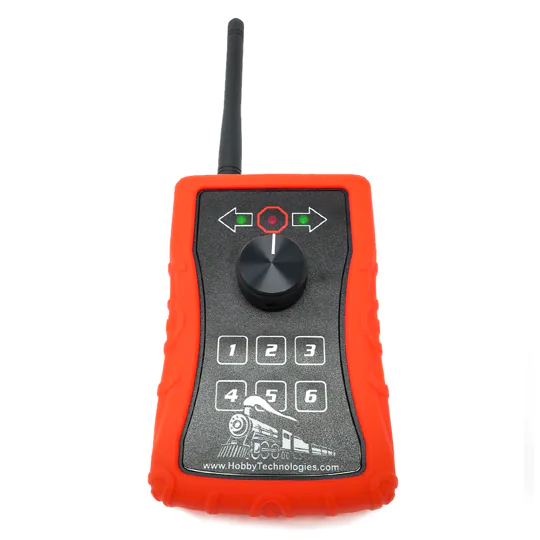Wireless Track Power Control Unit



Project Description
A low-cost sub-1 GHz transceiver is often used for very low-power wireless applications. We recently used a CC1101 to build a prototype toy train remote control and motor drive base unit. The CC1101 is mainly intended for the ISM (Industrial, Scientific and Medical) and SRD (Short Range Device) frequency bands at 315, 433, 868, and 915 MHz, but can easily be programmed for operation at other frequencies in the 300-348 MHz, 387-464 MHz and 779-928 MHz bands.
The transmitter consists of the following:
- 2 channel optical encoder
- 3 LEDs to indicate status
- 6 membrane switch buttons
- CC1101 transceiver
- Slot for 2 AA batteries
The base station consists of:
- DC brush motor drive circuit
- 3 LEDs to indicate status
- CC1101 transceiver
- Power management circuit to receive power from a transformer
The operation is quite simple. The transmitter keeps track of the encoder position and converts it to corresponding speed and direction data. This is transmitted to the base station using the CC1101.
The motor drive control in the base station is an H-bridge circuit. This type of a control circuit can move current in either direction through the motor winding enabling the toy train to move in forward as well as reverse direction.
CC1101 has several features that come in very handy while developing a sub-GHz system. One such feature is to Manchester encode the data. This allows data packet with too many 1’s and 0’s to be transmitted successfully. Another is data whitening. A 9 bit PN9 sequence is XORED with the data to be transmitted. The resultant data is XORED with the same PN9 sequence on the receiving end to receive the correct data.
The CC1101 has extensive hardware support for packet handling and data buffering. For instance, we can configure a receiver to have a preamble, sync word and CRC to ensure that the right packet was received at the base station. It has hardware built into the radio to ensure that the channel is free before transmitting the data. It also provides signal strength indicators and LQI to tweak and adjust the radio parameters.
Using all these features we were able to create a transmitter and base station system that had a range of 60-70m.